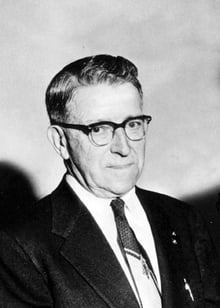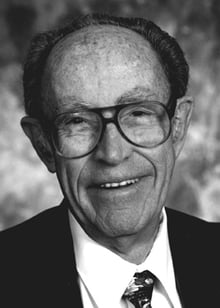By Oregon Golf Association
Continued from March article: Post-War Evolution, A Turning Point For the OGA  In 1954, the Oregon Golf Association took a significant step forward by making its first move to establish an office, while also hiring George Bertz as executive secretary for an annual salary of $400. Bertz, known for his extensive experience as the sports editor of the Oregon Journal, had been involved in golf journalism since the early 20th century, making him a seasoned expert in the field. He had already been managing pairings for tournaments, so assuming the role of executive secretary seemed like a natural progression as he neared retirement. Additionally, the OGA agreed to sponsor USGA qualifying events for the first time, expanding its reach and influence.
In 1954, the Oregon Golf Association took a significant step forward by making its first move to establish an office, while also hiring George Bertz as executive secretary for an annual salary of $400. Bertz, known for his extensive experience as the sports editor of the Oregon Journal, had been involved in golf journalism since the early 20th century, making him a seasoned expert in the field. He had already been managing pairings for tournaments, so assuming the role of executive secretary seemed like a natural progression as he neared retirement. Additionally, the OGA agreed to sponsor USGA qualifying events for the first time, expanding its reach and influence.
The following year marked a notable change as Clark County, Washington, was incorporated into the OGA's territory, allowing southwest Washington clubs to become eligible for membership. The organization continued to operate smoothly throughout the remainder of the 1950s, with key developments such as the introduction of golf course ratings for handicap purposes in 1956. Bob McReynolds, who would later become president in 1963, was appointed as the chairman of this committee. McReynolds emerged as one of the OGA's most effective leaders, contributing significantly to the areas of history and record-keeping as previously noted in the Tualatin Country Club feature.
As the decade drew to a close, Forest Hills was designated as the permanent venue for the Champions tournament, solidifying its place in the OGA calendar. The formal adoption of the USGA handicap system was another milestone achieved during this period. Additionally, George Bertz received a well-deserved raise of $200 per year, reflecting his valuable contributions to the organization. The 1960s brought about a period of change and evolution for the OGA. George Bertz's passing in late 1960 led to a transition in leadership, with Dale Johnson assuming the role of executive secretary. With a background as the golf editor of The Oregonian, coupled with a passion for the sport and proficient typing skills, Johnson embarked on a 30-year tenure with the OGA, leaving a lasting impact on its operations.
The 1960s brought about a period of change and evolution for the OGA. George Bertz's passing in late 1960 led to a transition in leadership, with Dale Johnson assuming the role of executive secretary. With a background as the golf editor of The Oregonian, coupled with a passion for the sport and proficient typing skills, Johnson embarked on a 30-year tenure with the OGA, leaving a lasting impact on its operations.
The 1960s witnessed a surge in golf course construction, marking the first significant wave of development since the 1930s. New leaders emerged within the organization, including Pross Clark, Ralph Swan, and Walter Cline, among others. The influx of younger golfers into administrative roles signaled a new era of leadership and innovation. Bob Norquist, appointed as assistant junior director in 1961, and Bill Wittenberg, serving as tournament advisor throughout the decade, were instrumental in shaping the OGA's initiatives. Don Krieger's appointment as the chairman of handicap and course rating further strengthened the organization's commitment to maintaining high standards in golfing facilities.
The 1960s may have been a decade of change and transition, but through effective leadership and strategic planning, the Oregon Golf Association continued to thrive, setting the stage for further growth and success in the years to come.
Stay tuned for the next decade in our series… up next is 1964-1973 in May.
